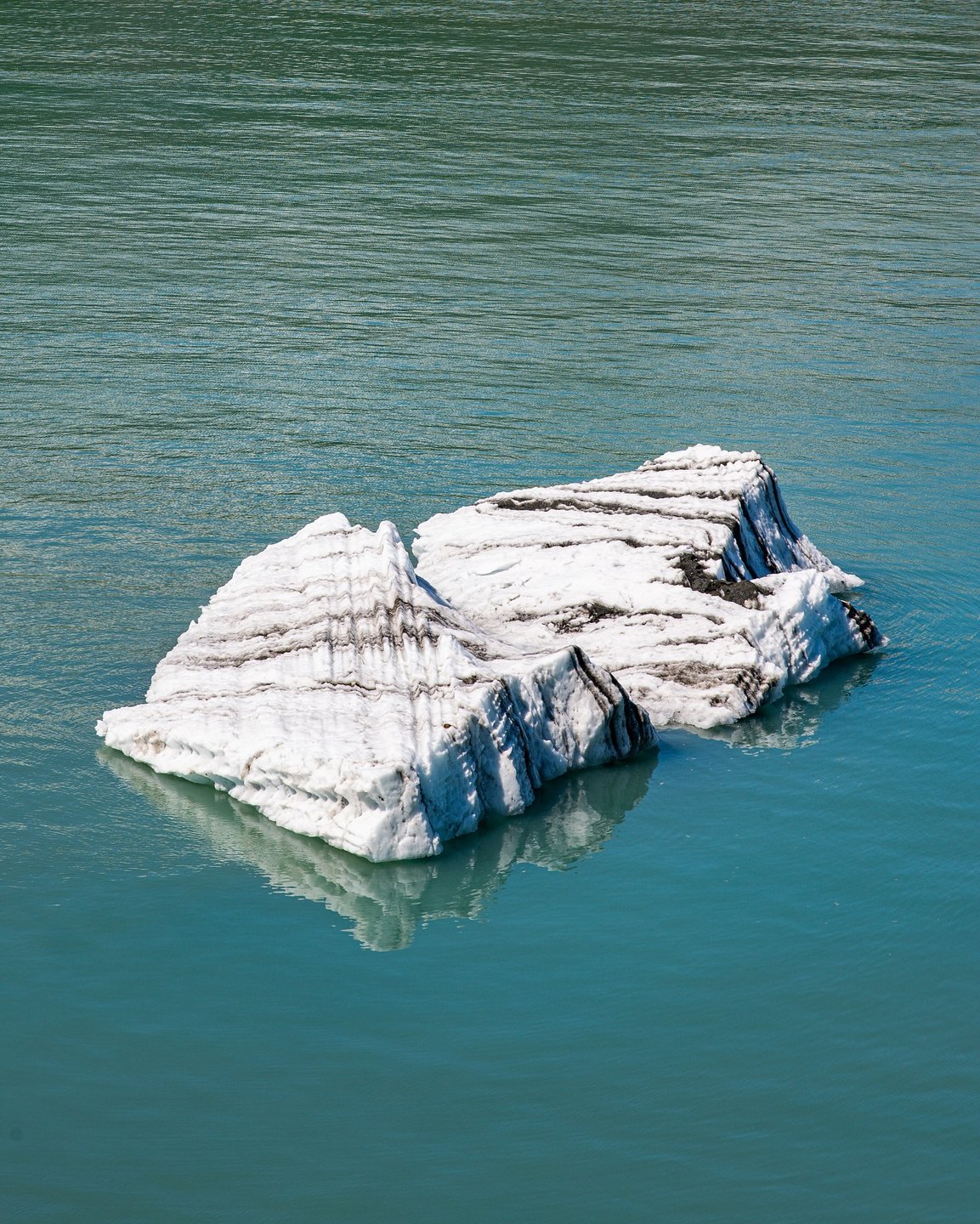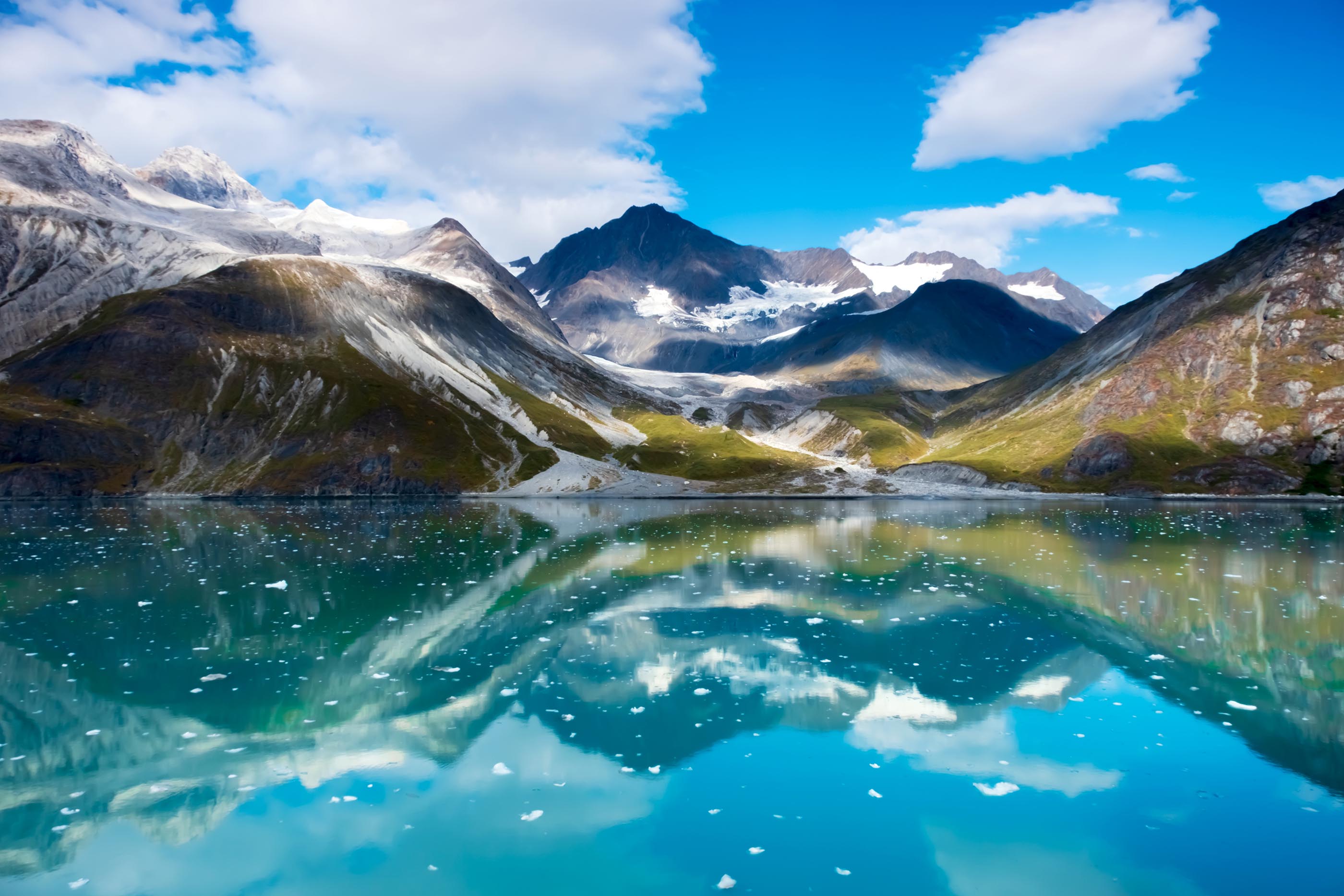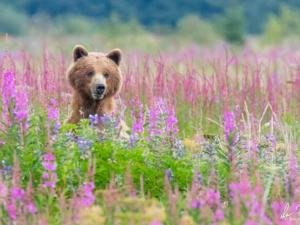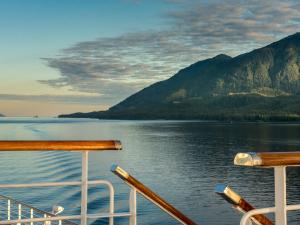Glacier Bay National Park and Preserve
Immerse yourself in a world of glacially-carved fjords, dynamic tidewater glaciers, and abundant wildlife in Glacier Bay.
Lofty mountain peaks, ice-sculpted fjords, an abundance of marine wildlife, and massive tidewater glaciers have made Glacier Bay National Park and Preserve one of Alaska's most spectacular settings. The 3.3-million-acre park is a must-stop for every cruise ship sailing through the Inside Passage.
Things to Do in Glacier Bay
More than 90 percent of the park's visitors arrive on cruise ships, which typically spend a whole day exploring the park’s stunning scenery and abundant wildlife, stopping in front of tidewater glaciers to watch for calving. While in the park, National Park Rangers board cruise ships to give presentations and answer questions. Independent travelers access the park through the village of Gustavus and the park headquarters at Bartlett Cove for a variety of adventures into the park.
In addition to glacier viewing, Glacier Bay offers a range of outdoor activities. Hiking trails crisscross the park, offering opportunities to explore the rugged terrain and stunning vistas. Wildlife watching is another popular activity; you’ll find the bay teeming with activity, from breaching humpback whales to playful sea otters and majestic bald eagles.
Most of the activities in the park are water-focused, with the most popular being boat tours, kayaking, river rafting, fishing, glacier viewing, and whale watching. Full-day boat tours travel about 130 miles through the park from Bartlett Cove to view wildlife and tidewater glaciers. Kayakers are often dropped off in the well-protected arms and inlets deep in the bay where they paddle past glaciers and camp along the shoreline on their own or as part of a guided kayaking tour. The park's 10 miles of maintained hiking trails are in the Bartlett Cove area.
Bartlett Cove is the park headquarters and includes a lodge and restaurant, the Xunaa Shuká Hít - Huna Tribal House, a campground, kayak rentals, and the tour boat dock. Also at Bartlett Cove is the seasonal Visitor Information Station for boaters and campers and the Glacier Bay Visitor Center. The cove lies within Glacier Bay National Park but is still 40 miles south of the nearest tidewater glacier.
About 9 miles away and connected to Bartlett Cove by road is the small town of Gustavus. The rural community has a dozen lodges, inns, and bed and breakfasts, a handful of restaurants, and outfitters and charter captains who arrange whale watching excursions, fishing trips, mountaineering expeditions, and guided kayaking tours.
For photography enthusiasts, Glacier Bay provides endless opportunities to capture the park's natural beauty. Whether you're a professional photographer or simply snapping photos with your smartphone, Glacier Bay's glaciers and landscapes offer incredible and dramatic subjects for photography.
The Glaciers of Glacier Bay
As the name indicates, Glacier Bay National Park is renowned for its stunning glaciers. Set like a diamond in southeastern Alaska, the park is home to over 1,000 glaciers, each contributing to the area's breathtaking scenery and ecological diversity. Glacier Bay's icy giants still command attention despite the global trend of glacier retreat. Though the park is not immune to the changing climate, and the glaciers have receded significantly over the past century, Glacier Bay continues to be a prime location for experiencing the grandeur of glaciers.
The park's glaciers are spread across 3.3 million acres, and many are visible along the shores of the bay itself. Margerie Glacier and Grand Pacific Glacier, both located at the head of Tarr Inlet, are among the most notable, often showcasing dramatic calving events. There’s nothing quite like the thunderous roar of a calving tidewater glacier to remind you of the mightiness of nature.
Exploring Glacier Bay's glaciers is best done by boat tour or cruise, both of which provide unparalleled views and opportunities for wildlife spotting. Kayaking offers a more intimate experience, allowing adventurers to navigate among icebergs and explore hidden corners of the park. Guided hikes take you toe to toe with the ice; several are available in the park. While the allure of walking on a glacier is certainly enticing, it's not recommended that you do so on your own due to the inherent dangers of these dynamic environments.
Wildlife in Glacier Bay
Glacier Bay provides habitat for a wide range of marine and land mammals. Orcas, humpback whales, harbor porpoises, Steller sea lions, and sea otters are commonly seen in the area’s waters. On land, keep an eye out for moose, brown and black bears, mountain goats, lynx, and porcupines. Over 280 bird species have been identified in the park including puffins, cormorants, bald eagles, murrelets, shearwaters, oystercatchers, hummingbirds, and petrels.
Landscape of Glacier Bay
The area’s landscape has been carved by glacial activity for over 100,000 years. From the deep coastal fjords to the lofty mountains of the Fairweather Range, this landscape is still largely dominated by glaciers – with over a quarter of the park covered in ice. While there are over 1,000 glaciers in Glacier Bay, the most dramatic are tidewater glaciers which flow from the mountain snowfields to terminate in the ocean. The tidewater glaciers of Glacier Bay are truly a sight to behold, stretching ½ to 1 ½ miles wide with ice walls of up to 200-300 feet above water at the terminus.
History of Glacier Bay
The Huna Tlingit have lived on the land now known as Glacier Bay for thousands of years. Visitors to the park today can learn about Tlingit culture, art, and traditions at the Xunaa Shuká Hít - the Huna Tribal House at Bartlett Cove. In 1794, a survey crew described the area as a five-mile indent in a glacier that stretched “as far as the eye could distinguish.” In 1879, when scientist/naturalist John Muir visited the area, he found the ice had retreated more than 30 miles, creating an actual bay. The glacier has continued to recede at a rapid rate.
The “Father of the National Park Service,” John Muir visited the area several times and was so inspired by the wild landscape and vast glaciers that he wrote about and presented on his Alaska travels extensively, later recounting his experiences in his famous work of nature writing, Travels in Alaska, published in 1915. John Muir’s words brought the area now known as Glacier Bay to the national stage. The Muir Glacier in Glacier Bay was named after John Muir.
William S. Cooper, an ecologist from Minnesota, visited the area for the first time in 1916 and continued to study its plants and ecology over the following decades. Like Muir, he was so inspired by the area’s landscape that he began lobbying efforts to protect Glacier Bay, including convincing the Ecological Society of America to campaign for the formal protection of the area. Thanks to his efforts, Glacier Bay was designated as a national monument in 1925. In 1980, Glacier Bay was protected as a national park as part of the Alaska National Interest Lands Conservation Act (ANILCA) signed by President Jimmy Carter.
Facilities, Lodging, and Camping in Glacier Bay
Bartlett Cove is the park headquarters and the site of a campground, a lodge, restaurant, bar, and the only maintained hiking trails in the park. At Bartlett Cove, paddlers rent kayaks, visitors board tour boats for a day cruise into the park, and rangers lead guided hikes and give naturalist programs. At the foot of the main dock is the National Park Service Visitor Information Station, where you can obtain backcountry permits, seek out information, or purchase a variety of books or topographic maps.
The Bartlett Cove Campground is a free walk-in tent camping area, with sites available on a first-come, first serve basis. The Glacier Bay Lodge serves breakfast and dinner and offers the only hotel accommodations within the park.
How to Get to Glacier Bay National Park
Most visitors to Glacier Bay National Park and Preserve arrive on cruise ships and do no disembark while visiting the area. The nearby town of Gustavus is accessible by air or passenger ferry. Alaska Airlines provides daily jet service from Seattle and Anchorage to Juneau with connections via a number of carriers to Gustavus. The Gustavus airport is 10 miles by road from park headquarters at Bartlett Cove. Several air taxi companies provide small-plane flights year-round from several southeast Alaska towns to Gustavus. A passenger ferry operates between Juneau and Gustavus/Bartlett Cove on a limited schedule.
For more information, visit the Glacier Bay National Park website.
Plan Your Trip
The Gateway to Glacier Bay, Gustavus offers a microcosm of all the natural beauty of Alaska. Gustavus is not too big -- no industry interfering...
The best of Alaska's glaciers and ports are yours on the ultimate Alaska cruise, with perfectly sized ships that get you closer to all the wonder...
Spirit Walker Expeditions is a locally guide-owned and operated company with over 35 years of experience leading sea kayaking trips throughout...
THE BEST OF ALASKA AND THE YUKON.
Holland America Line gives you two incredible ways to experience Alaska's incredible interior. Choose one of...
UnCruise defines adventure in Alaska. Moss and moose, thunderous glaciers and tufted puffins—Alaska is full of surprises. The birthplace of...

Local Climate & Weather
For Alaska's day-to-day weather, it’s best to plan for a bit of everything. Learn more about weather in this area.
Travel Inspiration
#TravelAlaska
#TravelAlaska
 @chelseachaseslife
@chelseachaseslife
 @chelseachaseslife
@chelseachaseslife
 @chelseachaseslife
@chelseachaseslife
 @chelseachaseslife
@chelseachaseslife
 @chelseachaseslife
@chelseachaseslife




















